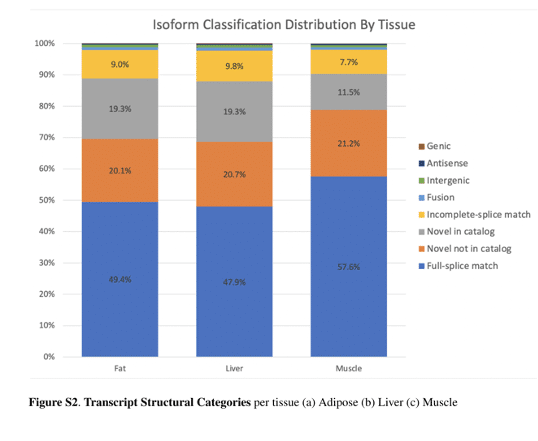Hibernating bears have heart rates of 10-15 beats per minute, yet they do not develop congestive heart failure. Despite accumulating enormous amounts of fat and acquiring insulin resistance, they do not suffer metabolic diseases. And they maintain muscle strength in the near absence of weight-bearing activity.

If we could crack these feats of physiology, perhaps we could apply the knowledge towards therapeutic targets for the prevention and treatment of numerous human diseases.
The Project that Shed Light on the Metabolic Mystery of Brown Bears
Washington State University researchers have come several steps closer to characterizing the hibernation phenotype by analyzing differential gene expression and tissue-specific isoform changes between active, hyperphagic, and mid-hibernation physiological states in the brown bear (Ursus arctos).
Led by the lab of Joanna L. Kelley (@joannalkelley), the team first identified more than 10,000 genes differentially regulated in adipose (fat), liver and muscle tissues between active and hibernating states
In a new preprint, they report the extent of tissue-specific isoform changes that take place during hibernation, revealed via PacBio long-read isoform sequencing (Iso-Seq).
The project, which was supported by a PacBio SMRT Grant, involved sequencing and analysis of tissues from three bears using the Iso-Seq method for full length RNA transcripts. The Sequencing & Genotyping Center at the University of Delaware sponsored the grant and processed the RNA with the help of the center’s director, Bruce Kingham (@bkingham).
“Single Molecule, Real-Time Sequencing Iso-Seq is ideal for identifying the full-length isoforms that are differentially expressed between seasons,” the authors wrote.
By combining the Iso-Seq data across samples and replicates, they obtained a total of 6.1 million full-length HiFi reads. After running the long reads through analysis, mapping to the reference genome, and filtering for library artifacts, they obtained 76,071 unique, full-length isoforms ranging from 150 bp – 16.5 kilobases (kb).

They merged these isoforms with the existing reference transcriptome (which contained 30,263 genes encompassing 58,335 transcripts) and found a total of 31,829 genes encompassing 107,649 transcripts, thus greatly increasing the number of known transcripts.
“Importantly, this merging of the reference transcriptome with the full-length transcriptome originating from samples of interest improves the reference and could lead to the discovery of differential isoform usage (DIU) that would otherwise be missed,” the authors note.
Tying Hibernation Biology to Human Health
Analysis of the data showed that metabolically active tissues vary dramatically in their isoform usage and underscored the complexity and importance of adipose as a dynamic tissue during hibernation. It demonstrated that both transcription and RNA processing play concerted roles.
“While differentially expressed genes have shed light on hibernation biology, determining genes where functionally distinct isoforms change between seasons is the next essential biology to uncover,” the authors wrote.

“Our study provides an unprecedented view into hibernation biology through the lens of RNA processing by producing a dataset that improved the annotation of the brown bear genome and reinforced the important role adipose plays in hibernation.”
Researchers have suspected that aspects of hibernation physiology might be applicable to solving certain types of human disease. Until now, however, little has been known about the role of differential isoform expression between a bear’s hibernation and active states.
SMRT Sequencing has allowed researchers at WSU to generate the most comprehensive analysis of isoform usage. This opens doors for further research into how things like seasonal insulin resistance and sensitivity, obesity, and urine production in bears during hibernation and activity can help inform targets for disease solutions in humans.
See what happened when PacBio scientist (and now bear enthusiast) Michelle Vierra (@the_mvierra) joined the WSU team as they collected samples for the project from bears at the WSU Bear Center. She wrote an account of the experience on Medium, and filmed her meeting with Willow the bear in the video below.
For more information about the SMRT Grant and how you can apply – go here.
If you’re interested in how to identify novel gene isoforms or have questions about Iso-Seq analysis, visit our RNA Sequencing page.